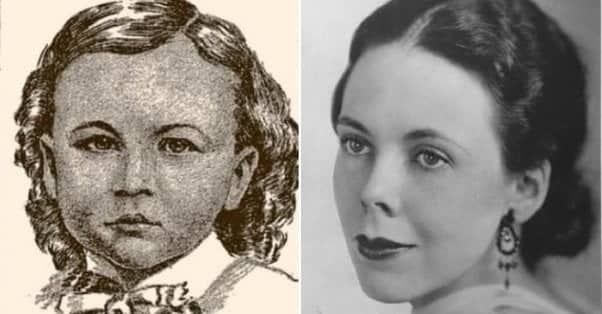From Heiress to Hostage: The Bizarre Kidnapping of Mary McElroy

Mary McElroy was a young American socialite and the daughter of Henry F. McElroy, the City Manager of Kansas City, Missouri, in the early 20th century.
She became widely known not for her social standing but for her involvement in one of the most sensational kidnapping cases of the 1930s. This article delves into the life of Mary McElroy, the events surrounding her infamous abduction, and the impact it had on her life and public perception.
Early Life and Background
Mary McElroy was born into a life of privilege in Kansas City, Missouri. Her father, Henry F. McElroy, was a powerful political figure, serving as the city manager during a time when Kansas City was under the influence of notorious political boss Tom Pendergast. The Pendergast machine controlled the city’s politics, creating an environment of corruption, crime, and occasional violence. Despite this backdrop, Mary’s early life was relatively sheltered, filled with the comforts and connections afforded by her father’s status.
Mary was known to be well-educated, sociable, and involved in her community. She had a keen interest in music and arts and enjoyed the social scene of Kansas City. However, her life took a dramatic turn on May 27, 1933, when she was 25 years old.
The Kidnapping Incident
On that fateful day in 1933, Mary McElroy was alone at her father’s house, taking a bath, when four armed men broke into the home. The kidnappers were George McGee, Walter McGee (the leader of the gang), Clarence Click, and Clarence Stevens. They forcibly removed Mary from her home, blindfolded her, and transported her to a small farmhouse in Shawnee, Kansas.
The kidnappers demanded a ransom of $60,000 from Henry McElroy. The amount was later negotiated down to $30,000, which was still a substantial sum during the Great Depression. Mary was held in captivity for over 29 hours, chained to a wall inside the farmhouse bathroom. Despite the dire circumstances, Mary later described her captors as polite, even considerate, which was one of the bizarre twists in her story. She claimed that her captors treated her with unexpected kindness, even ensuring she had food and comfort during her ordeal.
After the ransom was paid, Mary was released unharmed near the Milburn Golf Course in Kansas City. The event captivated the nation, as kidnappings of prominent individuals were not uncommon during that era, following the infamous Lindbergh baby kidnapping the previous year.
The Aftermath and Trial
The police quickly apprehended the kidnappers, and the trial that followed was a media sensation. The leader, Walter McGee, was sentenced to death—the harshest punishment ever given for a kidnapping in the United States at that time. The other gang members received lengthy prison sentences. However, Mary McElroy’s reaction to the trial shocked many; she openly expressed sympathy for her kidnappers, particularly Walter McGee, whose death sentence troubled her deeply.
Mary’s sympathy stemmed from the fact that her captors had treated her relatively well compared to other kidnapping cases of that era. She pleaded for clemency on McGee’s behalf, visiting him in jail and advocating for his sentence to be commuted. Despite public outrage and disbelief at her stance, Mary’s pleas were eventually successful, and McGee’s sentence was commuted to life imprisonment.
Personal Struggles and Tragic End
Although Mary survived the kidnapping physically unscathed, the psychological impact of the event and the subsequent media scrutiny took a heavy toll on her. She struggled with depression and anxiety, feelings exacerbated by the public’s harsh judgment of her compassion for her kidnappers. Mary’s mental health continued to decline, and she found it difficult to escape the shadow of the traumatic incident.
On January 21, 1940, at the age of 32, Mary McElroy took her own life. She left behind a note that expressed her ongoing emotional pain and a sense of hopelessness. Her death was a tragic conclusion to a life marked by privilege, trauma, and a controversial act of forgiveness that baffled and moved the nation.
Legacy
Mary McElroy’s story remains a complex narrative of victimhood, compassion, and the long-lasting effects of trauma. Her kidnapping highlighted the dangers faced by wealthy individuals during a turbulent era in American history, but it also shed light on the unexpected humanity that can exist between captor and captive. Mary’s unique response to her ordeal—choosing empathy over anger—sets her apart in the annals of crime history.
Her life and death serve as a poignant reminder of how the scars of a single event can alter the course of a person’s life, and how acts of grace, even in the face of terror, can define one’s legacy in unexpected ways.

